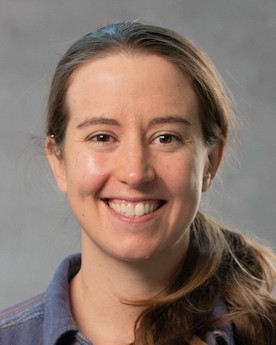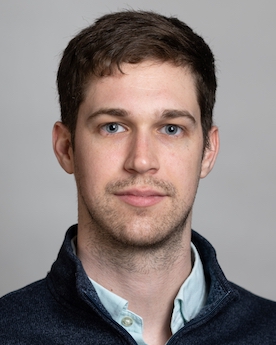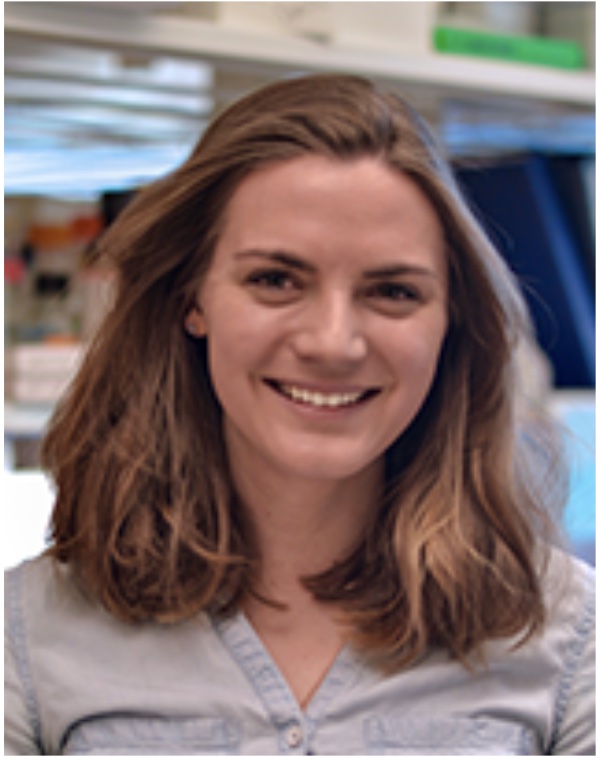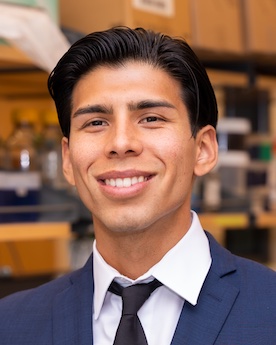
University of California, Los Angeles
Appointed in 2015
Read more
University of California, Los Angeles
Appointed in 2015
I am broadly interested in the evolution of drug resistance. For example, how does the distribution of fitness effects influence the predictability of evolution? What is the role of epistasis in the adaptation to higher drug resistance? How can we integrate in vitro fitness data with in vivo models to design personalized drug therapy for patients?_x000D_
_x000D_
To address these questions, I combine high-throughput in vitro fitness measurements with mathematical models of viral dynamics to predict the evolution of drug resistance in Hepatitis C Virus and HIV. Using deep sequencing, I perform high-throughput fitness assays for a library of mutant viruses to systematically explore epistasis and evolutionary pathways towards drug resistance. By combining empirical fitness landscapes with mathematical models of within-host viral dynamics and pharmacokinetics/pharmacodynamics, I build a quantitative framework to predict viral evolution and minimize the risk of drug resistance during therapy. The principles for rational design of antiviral therapy will inform patient-specific therapy of targeted cancer drugs.

University of California, San Francisco
Appointed in 2018
Read more
University of California, San Francisco
Appointed in 2018


Princeton University
Appointed in 2017
Recent studies have revealed the nucleosome acidic patch as a nexus for chromatin interacting proteins. Understanding the regulation underlying these binding events is critical to understanding of how genetic material is packaged and accessed in eukaryotes and how misregulation can lead to disease. It is well established that post-translational modifications (PTMs) of the histone tails help choreograph biochemical outputs on chromatin. By contrast, much less is known about how PTMs regulate access to the acidic patch, even though several modifications are proximal to this region. My research will combine the specificity of diazirine-based photocrosslinking reaction with high-throughput mass spectrometry-based techniques to accelerate the investigations into these regulations. The applications will be showcased in ascertaining the binding site between chromatin-remodeling proteins and the acidic patch, and a large-scale study to define the interactome of the acidic patch and chromatin effectors as the function of PTMs.

Massachusetts Institute of Technology
Appointed in 2019
Read more
Massachusetts Institute of Technology
Appointed in 2019

National Institute for Medical Research, England
Appointed in 1959
Read more
National Institute for Medical Research, England
Appointed in 1959


University of Washington
Appointed in 2006

Massachusetts Institute of Technology
Appointed in 1986
Read more
Massachusetts Institute of Technology
Appointed in 1986

Harvard University Medical School
Appointed in 2016
Read more
Harvard University Medical School
Appointed in 2016

King's College, University of London, England
Appointed in 1963
Read more
King's College, University of London, England
Appointed in 1963

Harvard University Medical School
Appointed in 2009
Read more
Harvard University Medical School
Appointed in 2009
I am mapping regulatory and signaling networks in Vibrio cholerae to identify factors and pathways that are required for virulence.
Improving the health of our world is a complex problem. ¬†The balancing act between providing food and health care for the masses, protecting the environment, ¬†and improving economies in developed and developing nations is often difficult. ¬†I enjoy science because of the unlimited potential it offers to provide solutions to many of the problems inherent in creating this balance. The basic sciences provide answers to the inner workings of life. ¬†These insights offer the possibility of developing new products to improve health care, decrease our environmental impact and improve food production, while simultaneously fostering the growth of new industries to bring products to those who need them. ¬†And it can all start at the laboratory bench just by asking, why?””


Scripps Research Institute
Appointed in 2012

Centre Nationale de la Recherche Scientifique, France
Appointed in 1980
Read more
Centre Nationale de la Recherche Scientifique, France
Appointed in 1980

Massachusetts Institute of Technology /
Scripps Research Institute
Appointed in 1997
Read more
Massachusetts Institute of Technology / Scripps Research Institute
Appointed in 1997

University of California, San Francisco
Appointed in 1991
Read more
University of California, San Francisco
Appointed in 1991


Yale University
Appointed in 1976

MRC Center, University Medical School, England
Appointed in 1975
Read more
MRC Center, University Medical School, England
Appointed in 1975

University of Texas Southwestern Medical Center
Appointed in 1998
Read more
University of Texas Southwestern Medical Center
Appointed in 1998

University of Utah
Appointed in 2023
Read more
University of Utah
Appointed in 2023
A wide range of organisms – such as nematodes, sea anemones, and bacteria – possess immune defenses to protect themselves against infectious microbes and viruses. Yet studying the interactions between hosts and infectious microbes remains limited to a handful of species. Dr. Katherine Deets will expand this list by examining the interactions between Tetrahymena thermophila and viruses in Dr. Nels Elde’s lab at the University of Utah. Dr. Deets is currently identifying novel viruses that infect Tetrahymena, and working to understand how Tetrahymena defend themselves against these viruses. This research will unlock a new experimental platform with powerful genetic tools for diversifying studies of the evolution of host-virus interactions.
As a graduate student, Deets investigated host-microbe interactions in the context of the mouse small intestine in Dr. Russell Vance’s lab at the University of California, Berkeley. Dr. Deets discovered a novel mode of antigen presentation that only occurs following inflammasome activation. This finding revealed a new connection between innate and adaptive immunity in the intestine. Dr. Deets will use her experience in host-microbe interactions to expand our understanding of immune defense in diverse.

Harvard University Medical School
Appointed in 2004
Read more
Harvard University Medical School
Appointed in 2004


Harvard University
Appointed in 2010
Current research: With a combination of novel single-molecule imaging approaches and traditional biochemical techniques I am investigating the mechanisms of ATP-dependent chromatin remodelers, a class of enzymes that dynamically alter chromatin structure.
I am intrigued by the notion that virtually all chemical reactions in our bodies are carried out by microscopic yet intricate molecular machines. For this reason, I decided to study the workings of these machines at a molecular level. John Kuriyan’s laboratory at the University of California, Berkeley was the perfect place for this work. There I studied the allosteric control of protein kinases and developed a passion for correlating protein structure with function. For my postdoctoral research I decided to venture into another important area of biology and study dynamic aspects of chromatin remodeling enzyme mechanisms using single-molecule imaging techniques in Xiaowei Zhuang’s laboratory at Harvard. Next to doing science, I enjoy windsurfing and surfing.

University of California, Berkeley
Appointed in 1958
Read more
University of California, Berkeley
Appointed in 1958

La Jolla Institute for Allergy and Immunology
Appointed in 2016
Read more
La Jolla Institute for Allergy and Immunology
Appointed in 2016
The TETs (TET1, TET2, TET3) are epigenetic enzymes regarded as responsible for active and passive DNA demethylation, and are involved in a wide array of physiological and pathological cellular responses.
I have performed my Ph.D training in Prof. François Fuks’ laboratory in Belgium at the time that TET function was discovered by the team of Prof. Anjana Rao. Applying proteome and genome-wide approaches, we found that the most potent partner of TETs is the glycosyltransferase OGT (Deplus*, Delatte* et al., Embo, 2013), and I recently discovered that Tet is responsible for RNA hydroxymethylation in drosophila (Delatte et al., Science, 2016).
Therefore, I naturally couldn’t resist joining Anjana’s lab where I am now investigating the roles of TETs and hydroxymethylcytosine in genomic instability and cancer. I am also fascinated by the advances in next-generation sequencing, and am developing novel methodologies to map epigenetic modifications, but also identify diverse hallmarks of cancer such as DNA breaks or aberrant DNA:RNA structures.
Outside of the lab, I enjoy surfing, hiking, and particularly love watching movies with friends.
benche65@gmail.com


Scripps Research Institute
Appointed in 2020

University of Michigan
Appointed in 2022
Read more
University of Michigan
Appointed in 2022
Cells and organisms such as bacteria or cancer cells live in communities and have complex population-level dynamics and emergent behaviors. These behaviors can significantly change their collective properties, including resistance to drugs and other environmental selective pressures. Predicting how cellular communities, rather than individuals, respond to drug exposure could help delay or prevent drug resistance during treatment.
Spatial structure and heterogeneity are important features of such communities – from the cell to the ecosystem scale. In my research, I aim to understand the essential, but poorly understood, relationship between spatial structure and population-level dynamics in bacterial biofilm communities responding to antibiotic selection via theoretical and experimental approaches.

Salk Institute for Biological Studies
Appointed in 1970
Read more
Salk Institute for Biological Studies
Appointed in 1970

Harvard University Medical School
Appointed in 2014
Read more
Harvard University Medical School
Appointed in 2014

Massachusetts Institute of Technology
Appointed in 1981
Read more
Massachusetts Institute of Technology
Appointed in 1981


University of Vermont
Appointed in 1992

University of California, Berkeley
Appointed in 1994
Read more
University of California, Berkeley
Appointed in 1994


Institut Pasteur, France
Appointed in 1972


Harvard University
Appointed in 2011

University of California, San Francisco
Appointed in 2007
Read more
University of California, San Francisco
Appointed in 2007


Duke University
Appointed in 2023
Many animals, including zebrafish, have the ability to regenerate limbs, tails, or fins following amputation. The regeneration process is thought to faithfully reconstruct the appendage, yet it is unknown how spatial and temporal dynamics in gene expression and cell-signaling pathways control regrowth. Dr. Rocky Diegmiller will use quantitative imaging approaches to investigate morphological and patterning dynamics in regrowth of the paired zebrafish pectoral fin. Diegmiller will conduct these studies in Dr. Stefano Di Talia’s and Dr. Kenneth Poss’ labs at Duke University. Diegmiller will explore how gene expression patterns are re-formed following amputation, and throughout regeneration. These studies will reveal insights into the dynamics and robustness of regeneration, and will dissect how multiple signaling pathways are integrated to ensure faithful regeneration. Furthermore, these studies will generate quantitative tools for studying regeneration that can be applied to other systems.
As a graduate student, Diegmiller used mathematical models and imaging to investigate developmental biology in Dr. Stanislav Shvartsman’s lab at Princeton University. Specifically, Dr. Diegmiller used the Drosophila germline cyst as a model system to investigate cell polarity and the emergence of symmetry breaking mechanisms in cell clusters. With his multidisciplinary background in developmental biology, Dr. Diegmiller hopes his research will also yield important connections and distinctions between developmental and regenerative pathways.

Johns Hopkins University
Appointed in 2022
Read more
Johns Hopkins University
Appointed in 2022
Protein synthesis is metabolically costly; it is therefore critical that cells regulate translation based on nutrient availability. Translation regulation must be flexible to enable cells to adapt to persistent nutrient deprivation, but still recover when nutrients are replenished. Signaling through the kinases GCN2 and mTORC1 can suppress both translation initiation and elongation in response to nutrient depletion, but how each mechanism contributes to global translational control is unclear. Here we investigate translation dynamics upon acute and long-term nutrient depletion, as well as during recovery from nutrient stress. In the immediate response to starvation, GCN2 robustly inhibits initiation to prevent ribosome loading onto transcripts. However, over longer periods of starvation, increased initiation causes translating ribosomes to collide with ribosomes stalled on transcripts. To explore these different temporal regimes, we employ a mass spectrometry-based approach to identify factors that modulate ribosome activity in response to nutrient stress through differential ribosome binding. This work will provide a more integrated understanding of how cells regulate translation and ribosome homeostasis across nutrient environments.


Harvard University
Appointed in 1981

Massachusetts Institute of Technology
Appointed in 1975
Read more
Massachusetts Institute of Technology
Appointed in 1975

Massachusetts Institute of Technology
Appointed in 1983
Read more
Massachusetts Institute of Technology
Appointed in 1983

Harvard University Medical School
Appointed in 2006
Read more
Harvard University Medical School
Appointed in 2006

University of California, San Francisco
Appointed in 2022
Read more
University of California, San Francisco
Appointed in 2022
Mammals with ovaries are born with a non-renewing supply of differentiated oocytes ranging from the thousands in mice to the millions in humans. While these high numbers imply a large stockpile, only a comparatively small number of the oocytes present at birth will ever be successfully ovulated and fertilized. To achieve this maturation, an oocyte must first be activated from its quiescent state and then undergo a period of extensive growth in order to accumulate large quantities of biosynthetic materials that are necessary to support the embryo prior to zygotic genome activation. We are currently limited in our understanding of factors that determine whether an oocyte will complete this growth or be fated for elimination/atresia. My research focuses on how both the intrinsic characteristics of oocytes and the extrinsic support provided by the surrounding somatic tissue determine whether an oocyte present at birth will ever be successfully ovulated. My goal is to apply this knowledge to future therapeutics for infertility.

University of California, Berkeley
Appointed in 1989
Read more
University of California, Berkeley
Appointed in 1989


Cornell University
Appointed in 1979

University of California, San Francisco
Appointed in 2018
Read more
University of California, San Francisco
Appointed in 2018
Immune responses rely on T cell receptors (TCRs) activating robustly upon binding foreign-antigens, but staying quiescent with abundant self-antigens. How TCRs convert small differences of extracellular interactions into binary intracellular signals remains elusive. Actin is a key regulator in controlling receptor dynamics, transport and clustering. However, little is known about how actin is coupled to TCRs and influences T cell signaling. I propose to dissect the cellular mechanisms that regulate receptor dynamics, particularly focusing on the crosstalk between receptors and actin. I hypothesize that receptor clustering is required for actin coupling, and that actin coupling exerts forces on receptors that facilitate ligand proofreading. This hypothesis will be tested by: (1) Determine how the spatial organization of the TCR affects its coupling to actin, by manipulating nanoscale receptor organization using DNA origami. (2) Define the contribution of force-generating actin network in ligand discrimination by single-molecule measurements of receptor-ligand kinetics. (3) Identify the molecular linkage between actin and TCRs, by proteomic profiling of TCR proximity interactome dependent of intact actin network. The proposal constitutes the first mechanistic study of how actin interacts with TCRs and impacts signaling and ligand discrimination. The results could provide new insights into new strategies for cell immunotherapy.

University of California, Berkeley
Appointed in 1987
Read more
University of California, Berkeley
Appointed in 1987


University of Chicago
Appointed in 2018

Whitehead Institute for Biomedical Research
Appointed in 1984
Read more
Whitehead Institute for Biomedical Research
Appointed in 1984

Vanderbilt University Medical Center
Appointed in 2023
Read more
Vanderbilt University Medical Center
Appointed in 2023
Clostridioides difficile infection (CDI) is the leading cause of hospital-acquired and antibiotic-associated intestinal infections. However, we do not currently have a clear understanding of CDI pathogenesis, which impedes the development of additional therapeutic strategies. Dr. Martin Douglass will investigate how CDI overcomes the human microbiota and immune system in Dr. Eric Skaar’s lab at Vanderbilt University Medical Center. Dr. Douglass will examine how CDI competes for nutrients with the microbiota and immune system. Furthermore, Dr. Douglass will identify which CD genes are required for host colonization and persistence. These studies may provide insight into novel therapeutic targets for treating CDI.
As a graduate student in Dr. M. Stephen Trent’s lab at the University of Georgia, Douglass examined the outer membrane of Gram-negative bacteria. Dr. Douglass discovered novel proteins that are required for the transport of lipids to the outer membrane. These studies provide potential therapeutic targets for novel antibiotics and provide Douglass with a solid foundation for interrogating new targets in CDI.

University of California, Berkeley
Appointed in 2007
Read more
University of California, Berkeley
Appointed in 2007


Stanford University
Appointed in 1964

Fred Hutchinson Cancer Center
Appointed in 2013
Read more
Fred Hutchinson Cancer Center
Appointed in 2013
My research focuses on the evolutionary diversity of centromeric architectures. Faithful chromosome segregation in all eukaryotes relies on centromeres, the chromosomal sites that recruit the kinetochore protein complex to mediate spindle attachment during cell division. Yet, despite this essential function centromeres are remarkably diverse. Most chromosomes are monocentric i.e., kinetochore assembly is restricted to a defined chromosomal region. In contrast, holocentromeres have kinetochores attached along the entire length of chromosomes. Holocentric chromosomes have evolved multiple times independently from monocentric ancestors. Yet, despite their dramatically different centromeric architectures, the transition to holocentric chromosomes has remained enigmatic.
I performed a computational survey for centromere and kinetochore components in mono- and holocentric insect orders. This study revealed the unexpected finding that the centromere specific histone variant, CenH3 – known to be essential for centromere function in most eukaryotes – was lost on all four lineages that are associated with independent transitions from mono- to holocentric chromosomes. Expanding my analyses to other kinetochore components I found that homologs of many inner kinetochore proteins are still present, suggesting that holocentric insects utilize alternative ways of initiating kinetochore assembly on chromatin. Currently I am in the process of determining the CenH3-independent kinetochore assembly pathway as well as the molecular architecture of the insect holocentromere.


Stanford University
Appointed in 2008
My current research involves analysis of the cellular response to replication fork stress.
After finishing my undergraduate degree at the University of Leeds in the UK, still pretty clueless as to what I wanted to study, I worked in the lab of E. Peter Geiduschek at the University of California, San Diego, as a research technician. There, I developed a fascination with DNA metabolism. I continued pursing this interest ¬†by studying DNA repair in the lab of Steve Jackson at Cambridge University for my doctoral studies, and am now studying DNA replication. I greatly enjoy the challenge of independent academic research but also the fact that it is a very social endeavor. When I’m not in the lab, I’m usually hiking and camping in California or enjoying its excellent food and beverages.

Fred Hutchinson Cancer Center
Appointed in 1997
Read more
Fred Hutchinson Cancer Center
Appointed in 1997